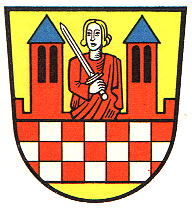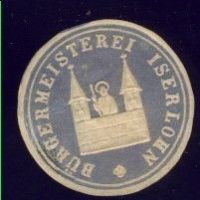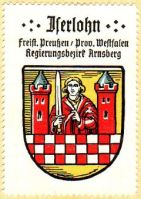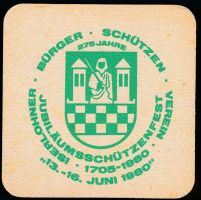Iserlohn: Difference between revisions
Knorrepoes (talk | contribs) m (Text replacement - "{{de}}" to "") |
Knorrepoes (talk | contribs) m (Text replacement - "{| class="wikitable"↵|+Official blazon↵|-↵|'''German'''↵| ↵|-↵|'''English''' ↵| {{blazon wanted}}↵|}" to "{| class="wikitable" |+Official blazon |- |'''German''' | blazon wanted |- |'''English''' | blazon wanted |}") |
||
| Line 13: | Line 13: | ||
|- | |- | ||
|'''German''' | |'''German''' | ||
| | | blazon wanted | ||
|- | |- | ||
|'''English''' | |'''English''' | ||
| | | blazon wanted | ||
|} | |} | ||
Revision as of 08:08, 6 April 2023
ISERLOHN
State : Nordrhein-Westfalen
District (Kreis) : Märkischer Kreis (until 1972 a Urban District (Kreisfreie Stadt))
Additions : 1975 Amt Ergste (partly), Hennen, Ihmert, Kesbern, Letmathe (1956 Amt Oestrich, Lössel, Oestrich), Sümmern (partly)
| German | blazon wanted |
| English | blazon wanted |
Origin/meaning
The arms were officially granted in 1913.
The oldest coins of Iserlohn date from the early 13th century and show a city wall with three towers. Later that century the middle tower was replaced by St. Pancratius, the patron saint of the city. In the early 14th century this composition was placed on the seal. In the 16th century the composition was placed in a shield to form the present arms. The chequered bar below the city wall is derived from the arms of the Counts of the Mark, who founded the city.
The arms by Hupp in the Kaffee Hag albums +/- 1925
Literature: Stadler, 1964-1971, 8 volumes.



